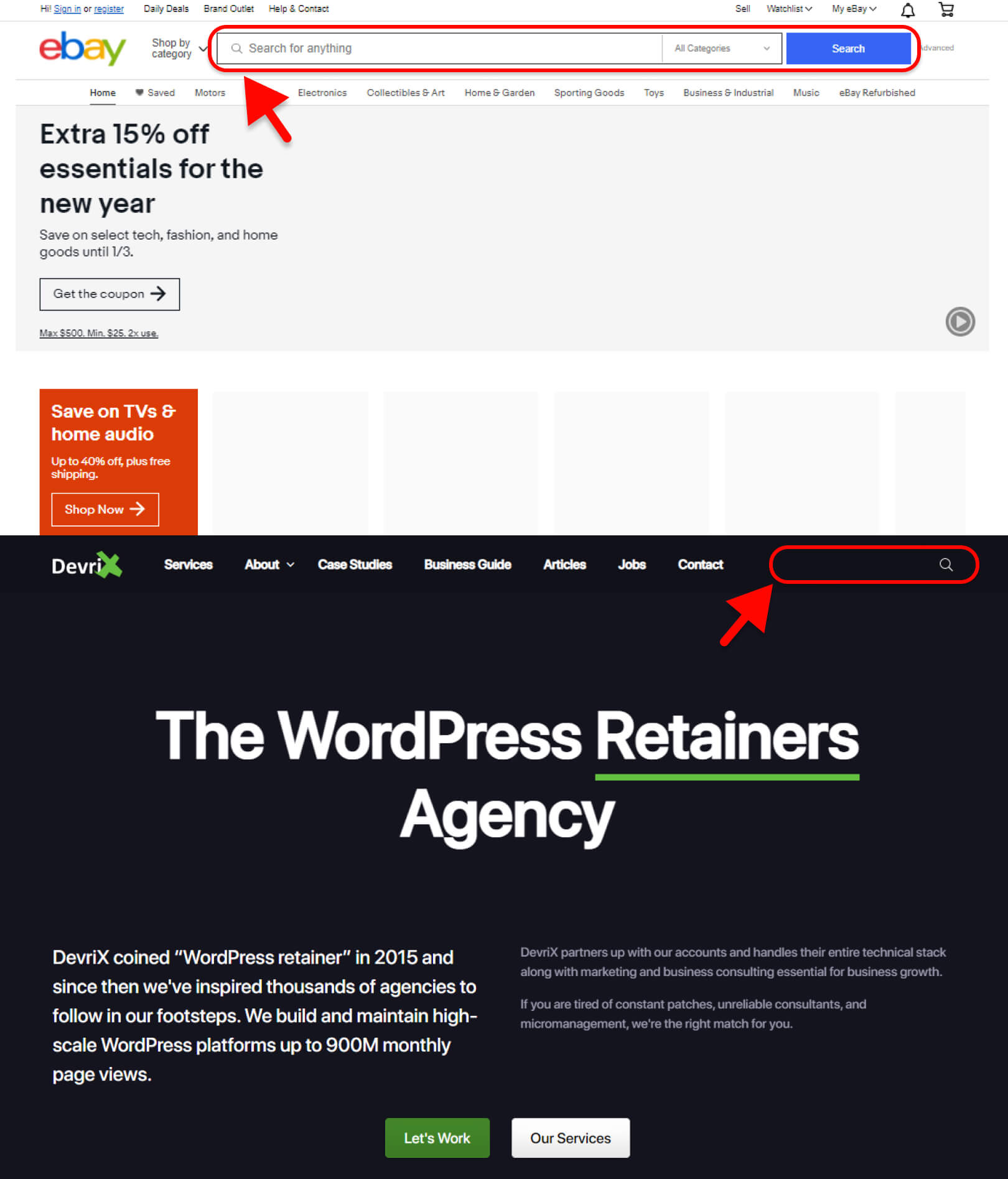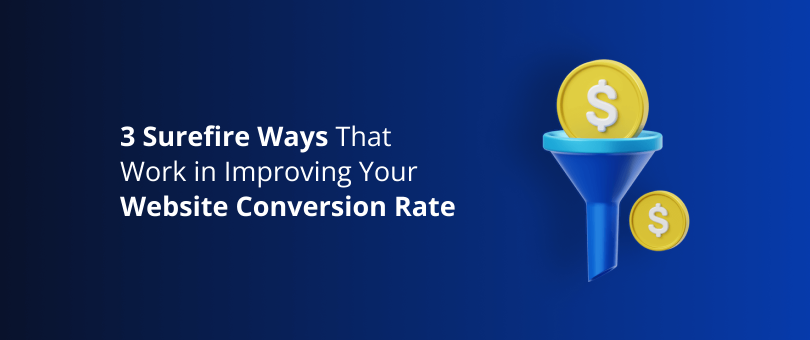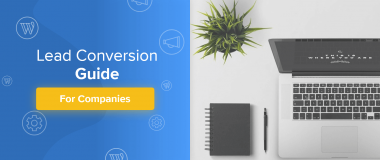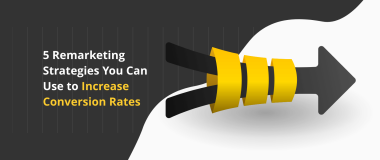As a WordPress development agency, we at DevriX are always looking for the best strategies to increase customer engagement and improve the overall website conversion rate . If you are not familiar with the term, it might seem complicated at first. However, once you learn what website conversions are, you will also understand why it’s such an important performance indicator of how effective your efforts are in turning visitors into leads and clients.
A website conversion happens when a user completes a practical action on your page. This could range from signing up for your newsletter, downloading an ebook, leaving a comment, to purchasing a product/service or scheduling a demo. Hence, a website conversion rate is the percentage ratio of all who actually completed the action compared to those who didn’t.
Maintaining a good onsite conversion rate is essential for your business success. It will help you ensure that you can effectively engage prospects once they land on your page, and nurture them into becoming paying customers.
There are numerous articles all over the internet with tips and tricks, but do they really work? Improving onsite conversions is only difficult if you make it difficult. So in this article, we will share with you three proven and easy to implement ways which can help you improve your conversion rate.
Related: WordPress VS Drupal – Who is the winner
Without further ado, let’s get right into it.
1. Test Your Copy

Your website copy can greatly impact customer engagement and conversion, and therefore demands extra focus and effort. One word or a different phrase can really make a difference.
Any good copy may seem like it will get the user to complete the action you desire but what if there is something even better? This is where you can A/B test your copywriting. The results may amaze you.
Through testing different copies, you are sure to know which one works better with your audience. As a result, you not only increase onsite conversion, but learn a great deal about your visitors.
Here is an example about how copy can really be the difference between something that works and something that ultimately converts.
Download the book now and achieve success with your small business
Download the book now and win with your small business
At first glance, both the sentences convey the same meaning. But after further consideration, the second one has a higher chance of making the user click and download. Why? Because the word ‘win’ has more power and impact on the audience than ‘success.’
It is these small tweaks in your copy that can really make a difference. And if you don’t experiment and test your different versions of text, you will never know what sort of thing will work.
The key here is to entice the customer by showing the great benefit of completing an action. Simply put, it is the battle between the benefits of carrying out the action and ignoring it. Therefore, your words should be persuasive and hit the nail on the head.
Testing with different copies is a great way to collect information about your visitors. It can significantly improve your copywriting and with time you will know what captivates your audience and pushes them to follow through with the call to action (CTA) you set out for them.
There is a lot you can find about writing an effective copy. This video provides some tips to improve your onsite copy and eventually improve your ranking as well. Additionally, besides improving your website conversion rate, a good copy can also increase your website’s ranking, which means more visitors to your site and more conversions for you.
2. Provide Social Proof

How often do you buy something blindly if you see a friend buying it? What do salesmen say when you ask them which product is better when you are stuck between two choices? They usually tell you that one of the products sells better and you immediately waver towards that. Why? Because you have proof that a particular product is better. There are a lot of people buying it, a friend buys it or someone you admire buys it.
Social proof is a great asset when increasing conversions on your website. Now instead of a salesman, your website will have a small text saying that this product was bought by this many people. This is far better than simply asking people to buy a product. It will persuade the user to click and perform the desired action because now they see the proof that it would be worth their while and so they trust it.
Reputation is another aspect to look at in this matter. If you have someone reputable and/or famous as part of your social proof, your website conversion rate is likely to boom. It works in a similar fashion to a TV advertisement with a famous celebrity, only you do not have to pay out thousands of dollars. If your product is used by a reputable firm, mention that in the CTA, and you will see improved conversions.
Keep in mind that social proof does not have to be complicated. You just have to use the feedback you receive, then make it work for your product. Keep it simple, straightforward and visible.
The proof can even be used as a personalization tactic as more often than not people respond to content they relate with. For example, the proof could show that the action was completed by people in the same area as the visitor.
3. Optimize Internal Site Search
Internal site search is often forgotten in the game of conversions, but it is a vital tool. When opening a website, about 43% of visitors go straight to the internal search bar, according to Forrester Research. And AddSearch has found that 15% of total visitors who used site search account for 45% of all revenue.
With this in mind, we can certainly say that an optimised internal search can be of a huge advantage for improving website conversions. All you need to do is give users the thing they really want – easy and seamless navigation on your pages.
Optimize the Search Bar
In order to increase website conversions with internal search, you have to improve the user experience. The first thing to start with is the search bar. It should be prominent and easy for visitors to locate and use. Many websites position it at the top of their home page either in the front and center or in the upper right.

Use keywords to direct visitors to your conversion point, like in the ebay example shown above. This is especially important for eCommerce businesses as it provides a highly effective CTA for converting “spearfishers” – users who visit a website searching for a particular product.
Leverage Search Filters and Suggestions
To make this experience even better, you can also include product categories as part of your internal search, so prospects can filter the results and find what they are looking for much faster. Additionally, you can also use site retargeting to provide suggestions for similar products.
For example, if a visitor is searching for a new mobile phone, include in the results things similar to mobiles that you are trying to sell. If you have an offer on a tablet, the search result can feature that and take the customer to the tablet even though they were interested in mobiles.
Related: How to Increase the Time Visitors Spend on Your WordPress Website
Suggestions and filters are absolutely vital in using onsite search, especially if you have dozens of categories of products. The control should be given to the customer through the search, but in a way that is beneficial for both you and them.
Suggestions as well as filters on the search bar can lead the visitor to the desired page which in turn could result in faster website conversions. If you do not have the exact product the user is searching for, the search result should feature similar products or most frequently sold products instead of showing no products at all.
Don’t Forget About Mobile Devices

Mobile devices account for pretty much half of all online traffic, according to Statista, and play an important role in the purchase cycle. A research by OuterBox has found that: 79% of smartphone users in America have completed at least one online purchase using their smartphone over the last six months; and 80% of shoppers use their mobile device when shopping at a physical location to find a particular item, compare prices and read reviews.
Optimizing your internal search for mobile devices is therefore another important action to take to improve website conversions. Firstly, make sure your search bar is easy to use on a smaller screen and that search results load fast. Secondly, keep in mind that misspelling is a common phenomena when typing on mobile and always offer search suggestions. Lastly, be careful not to overwhelm users and consider limiting the number of product suggestions that appear on the screen.
Related: 6 Strategies to Drive Up Sales with Your Mobile App
You can see optimized website conversion rate as a result of better internal search. The sad part is that businesses do not focus on internal search as much as they focus on other things. Internal search is a great way to learn about your visitors, what they are looking for and what is their behavior? You can enable site search tracking with Google Analytics and use data to learn about search patterns and keywords.
Conclusion
In order to stay ahead and maximize onsite conversion, the best way is to stick to what you know will work. It does not hurt to experiment once in a while, but for other times, the above three methods present a proven way to increase conversions. Words really matter and a good copy can take your website conversion rate to a new level. Giving your audience a little nudge with the help of social proof is another viable method. Lastly, an improved onsite search can result in improved conversions. One thing to note about all three ways is that they also allow you to learn about the audience, and using that data, you can become an expert at onsite conversion.




